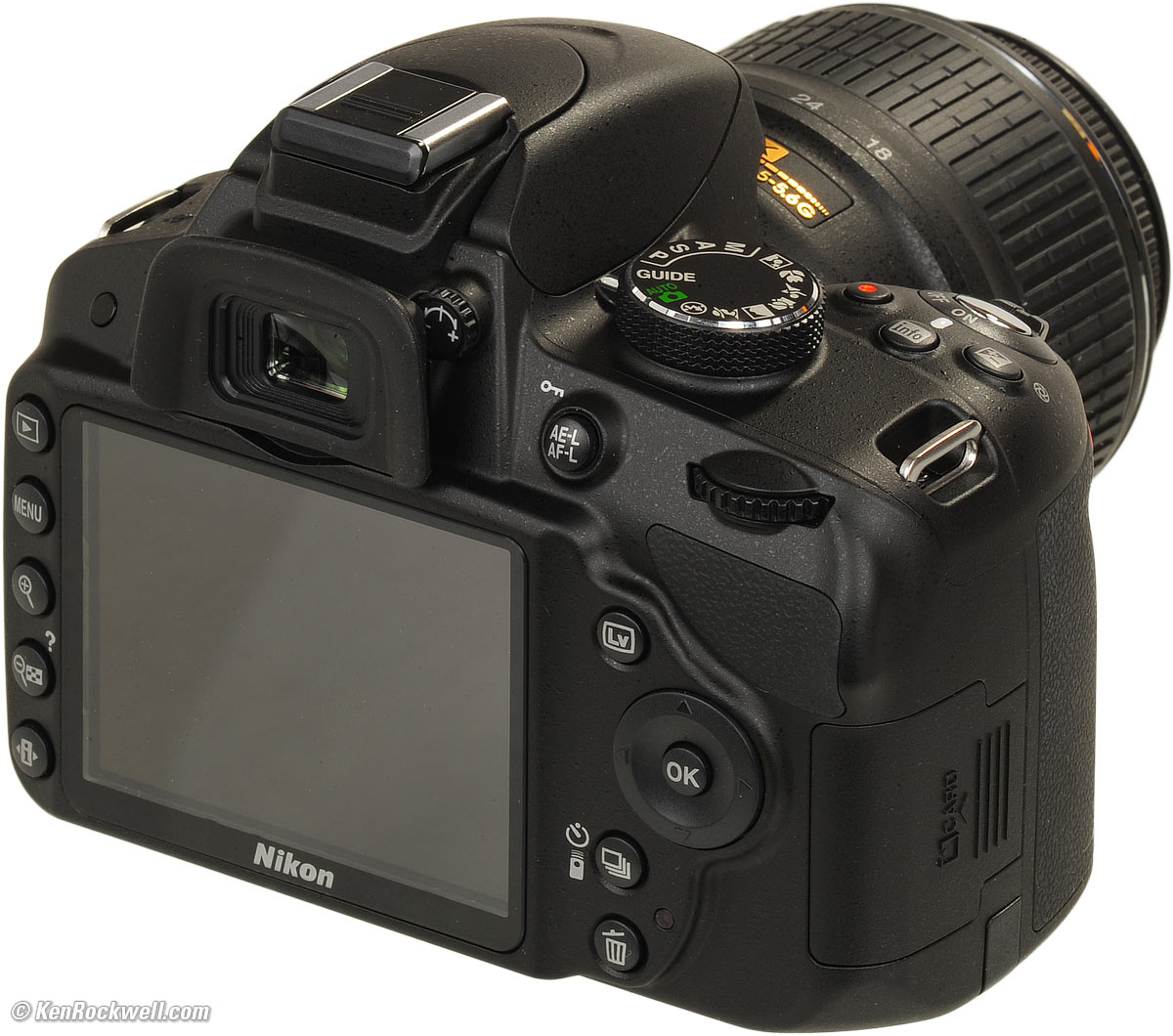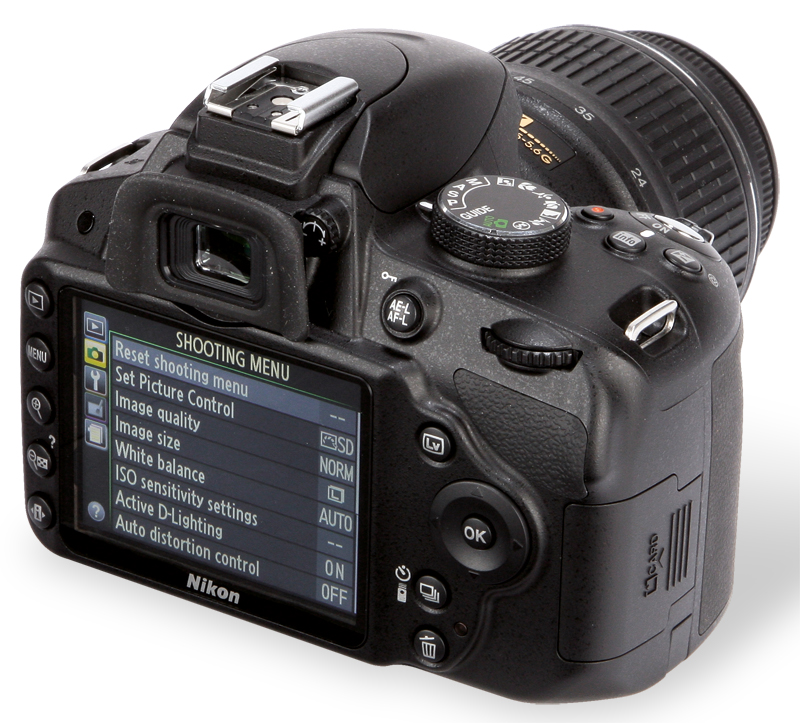

In M mode, this easy-to-reach button allows you to toggle between aperture and shutter speed settings, making the lack of a second control wheel less problematic. Hold down this button with your right forefinger and spin the control wheel on the top-rear of the camera with your thumb to adjust its settings - simple and intuitive. The Exposure Compensation button is thoughtfully positioned next to the shutter release. We feel that Nikon deserves kudos for this, as a mode like this can teach beginners a lot more about the basics of photography than the green Auto mode in which the camera assumes control of almost everything. The main purpose of the Guide mode remains the same as on the D3000 and D3100, namely to teach beginners about what settings to use in a number of shooting situations, and how these settings influence the final output. Also new options have been added to the Advanced operation menu, for example to help you to reduce blur or soften backgrounds. The Guide mode first seen in the D3000 has also been carried over, and enhanced to include sample images to help you to identify the shot.

The Nikon D3200 follows conventional DSLR design in having a shooting mode dial on the top of the camera, which allows you to select either one of the advanced modes like Manual, Aperture- or Shutter-priority, or a number of scene modes. Nikon bodies don't offer any form of in-camera image stabilisation, unlike similar models from Sony, Pentax and Olympus, so the affordable 18-55mm VR lens is a good partner for the D3200. It also adds the very important advantage of Vibration Reduction.

The 18-55mm f/3.5-5.6 VR kit lens that Nikon supplied feels fairly well-balanced - if a tad front-heavy - on the Nikon D3200 and it fits into place with a reassuring mechanical click.
#Nikon d3200 slr reviews movie
There's also the unwelcome removal of the D3100's drive-mode lever at the top, which we loved because it made setting and checking the current drive mode very easy and straightforward, and the logical relocation of the small red button that acts as a movie shutter release, enabling one-touch video recording when you are in Live View, from the rear to the top of the camera next to the main shutter release button. Notable changes to the outside of the camera include the inclusion of an infrared remote sensor in the grip and rear of the D3200, which now accepts both an infrared release and a wired remote release cable, and the use of a simple button to take you to Live View mode rather than the D3100's more fiddly spring-loaded lever. The Nikon D3200's body is almost identical to its predecessor in terms of the overall dimensions and weight, with most external controls in the same places as before. This is helped by the surprisingly classy rubber coating on the grip, which also appears on the thumb rest on the back of the camera. The camera body itself is mainly plastic, but while the D3200 certainly doesn't feel as robust as some of the company's higher specified models, it still exudes a degree of quality you might not expect at this price point. Still, expect having to find a place for your little finger under the camera if you have larger-than-average hands. Like the 18-month old D3100, the new Nikon D3200 is a rather small DSLR camera, although it does come with a chunky right-hand grip that makes it better suited to hand-held shooting than some of its competitors.
#Nikon d3200 slr reviews 1080p
The D3200 also boasts a 3 inch 921k-dot LCD monitor, one-touch full 1080p HD video recording with autofocus, quick-access Live View mode, ISO range of 100-12800, 11-point autofocus system, 4fps continuous shooting and the latest-generation interactive Guide Mode. The Nikon D3200 is an entry-level digital SLR camera boasting a newly designed 24.2 megapixel DX format APS-C sensor and the same EXPEED 3 processor as the flagship D4 DSLR.


 0 kommentar(er)
0 kommentar(er)
